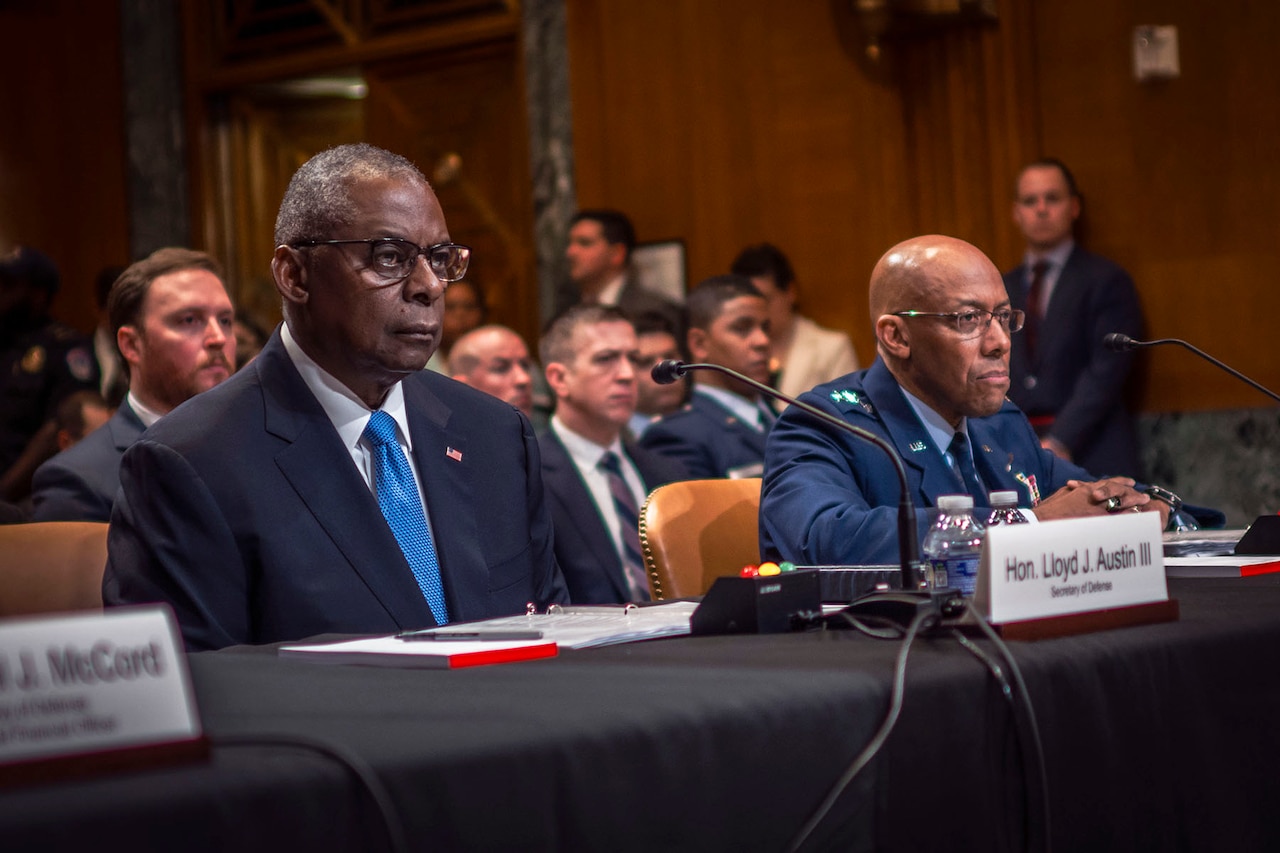The Defense Department’s top official told Congress today that DOD’s fiscal year 2025 budget request, about $849.8 billion in all, includes tradeoffs between capability in the future and readiness.
“[Our budget request] is aligned to our strategy,” Secretary of Defense Lloyd J. Austin III said in testimony before the Senate Appropriations Committee’s defense subcommittee. “We made tough, but responsible decisions that prioritize near-term readiness, modernization of the joint force, and support for our troops and their families. Our approach dials back some near-term modernization for programs not set to come online until the 2030s.”
When asked, Austin said investments now in 5th- and 6th-generation aircraft have been delayed to, instead, invest funding in areas more important in the short-term, such as service members and their families. Nevertheless, he said, the department is still looking toward the future.
“Our budget does include, as you heard me say earlier, $143.2 billion for [research, development, test and evaluations] and $167.5 billion for procurement,” the secretary told senators.
But Austin did tell lawmakers that the risk in modernization investments today will need to be addressed in future budgets.
“Because we accepted some risk in modernization for the out years, we’ll need to have a growth in the top line in the out years to ensure that we can recapture some of the things that we weren’t able to get into this budget,” he said.
Chairman of the Joint Chiefs of Staff Air Force Gen. CQ Brown, Jr., who testified alongside Austin, said he didn’t expect that the FY 2025 budget would negatively impact defense operations, and also reinforced Austin’s comments, saying that in future budgets there would need to be an increase in top-line funding to refocus on modernization.
“For operational impacts for today, because of our focus on readiness, I don’t see operational impacts,” Brown said. “As the secretary highlighted, we had to defer some of our modernization. [When] you think about five, six years, a decade from now, there’s potential challenges if we don’t get the additional support in the top line in the out years.”
Brown said as chairman he’s focused on both capability and capacity to support the joint force. And both will need to be addressed in coming years, he said.
“We got to make sure we have capability that stays ahead of the threat, and then also have capacity to be able to operate in many of the areas around the world like we do today,” Brown said. “And that’s where we need to make sure we’re working closely together on the out years to ensure that we can actually continue to modernize and make sure we stay ahead of the threat.”
This article, Austin: FY 2025 Budget Includes 'Tough, But Responsible' Decisions, was first published by The Department of Defense.








